Category: Martech

Marketing one-to-one is the latest way of developing marketing strategies, which involves practicing the highest level possible of personalization towards your customers. This high level of personalization is already being carried out by many companies through various channels, such as social media ads, email marketing, website personalization, and offline marketing.
By leveraging customer data and machine learning, marketing one-to-one enables companies to create personalized experiences that distinguish their brand from competitors and boost sales.
How to carry out Marketing one-to-one strategies?
To carry out marketing one-to-one strategies, data is fundamental. Once this data is obtained, it needs to be actionable. Here are four simple steps to follow:
-
-
- Know your customer: To develop this type of strategy, you need to know your customers’ preferences in terms of buying habits, content, and products. Collect every piece of data available for each customer, such as their demographics, purchase history, and engagement with your brand.
- Know your product: Like with customers, you need to know why each product is liked by each customer or why it isn’t, and what it can bring them.
- Know the effect of your campaigns: By analyzing historical data, you can determine the impact of each campaign on each of your customers and products.
- Develop original personalized content: Once you’ve analyzed customer and product data, you should be able to develop unique, appealing content for each customer depending on their wishes and needs.
-
What technology do I need to carry out a Marketing one-to-one Strategy?
To carry out marketing one-to-one strategies, a Customer Data Platform (CDP) is a critical technology for retailers. A CDP allows companies to store every piece of data related to customers, sales, campaigns, and any other useful data for your company’s purposes. With the help of artificial intelligence (AI), a CDP can cross-reference this data to obtain 360 profiles of your customers. These profiles, combined with AI, allow you to hyper-segment, personalize, and predict future behaviors of your customers.
An example of a Data-Driven Marekting one-to-one strategy
For example, if you are a fashion retailer, you can use the data mentioned before to understand your customers’ preferences, such as the size of your customer, the type of clothes they like, and the amounts of money they usually spend.
By analyzing customer behavior during specific events, such as special holidays or sales events, you can adjust your marketing campaigns to match their behavior. If a customer tends to buy multiple items during a particular event, you can recommend similar products or offer a discount for a bundle purchase. This type of personalized experience is what customers demand today, and it can lead to increased customer satisfaction and loyalty.
WHY FLYDE?
Do you want your company to move on to the next level? A CDP is the key tool that will allow you to maximize the potential of your data and grow your business. Having control over all your data is now very simple.
Moreover, if you do not have IT or Data Scientist teams, this tool will allow you to outsource this function. And if you have them but want to reduce their workload and give more autonomy to your marketing and business teams when it comes to working with data, implementing an easy-to-use CDP would be the best option for your company. It will allow any single member of your company to use it, as this softwares are prepared for them.
Start taking control of your data today.
Schedule a meeting with one of our experts and discover how FLYDE can help your company achieve its goals.
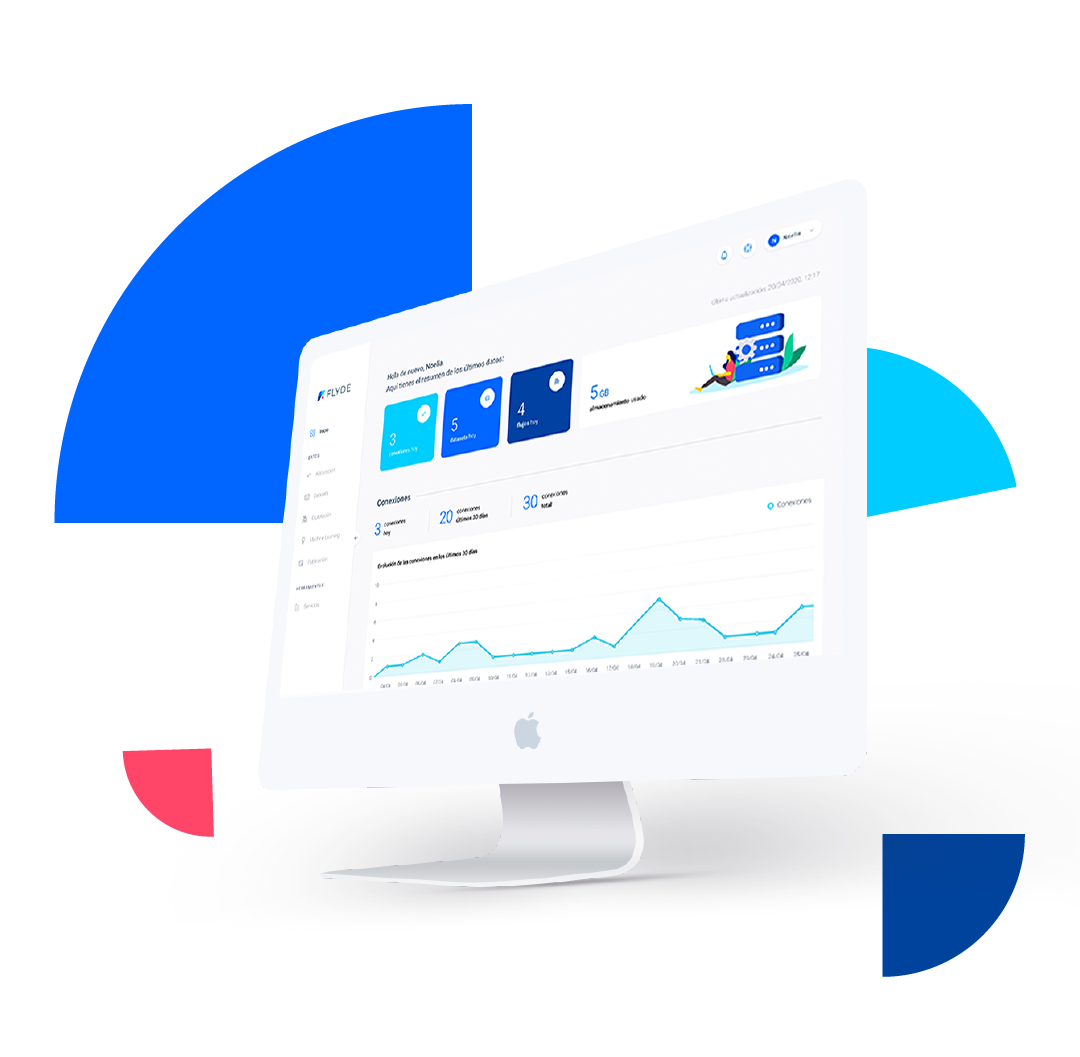

Third-Party Cookies are slowly agonizing, the main browsers have already killed them. But, what would this mean for companies? Are we facing a new Marketing Era?
All your doubts will be solved in this article. Also we will see the possible alternatives or if there are not feasible alternatives for Third-Party Cookies and companies will have to completely change their consumer-based strategies.
Privacy
Third-Party Cookies have been used as an incredibly efficient tool, allowing companies to track their customers to have a complete vision of them. This tool generates value to companies in terms of customer knowledge and segmentation possibilities. However, it was incredibly invasive for many users, who saw it as an attack on their privacy.
Not just that, the fact that, as we mentioned, this type of cookies are going to disappear from the main browsers (if they have not already done so), presents us a scenario in which the future of digital marketing seems to be directly focused on the use of the data that the customer provides you with directly: the First-Party Data.
Differences between using 3rd Party Cookies and 1st Party Data
Third-Party Cookies are used to recap information about users. They have an analytical purpose, as it registers from socio-demographical data to attitudinal data, allowing companies to obtain profiles and segment the market based on habits or interests from each particular user. This is why this has been an incredibly useful tool for companies until now, when their use has become very limited and will soon be obsolete.
It is at this points where we should look in to the future, into the use of First-Party Data. First-Party Data are data obtained by your company directly from your client. Data shared voluntarily by your client and that would help your company know properly your customer’s insights. By using this tool you would be generating a much more in depth relationship with customers, boosting the engagement.
Currently, due to advances in technology, companies have the possibility of collecting an enormous amount of First-party Data in a relatively simple way. The problem for companies start when this data is not used properly, due to problems in the storage and in the way it is sorted. We must bear in mind that is useless to recap all of this data if we are not be able to analyze it properly with the tools available in order to understand our customers and offer them great customer experiences.
New possibilities that a CDP could give to your company
Unlock your customer’s value. With a Customer Data Platform everything is possible. A CDP is a tool that would allow your company to store and structure every single piece of data that your company has available. Also, a CDP would join in the data that your company has stored in different platforms (social media, CRM, etc.), and the sociodemographic data available in the market that you wish (Average rent per district, Nº of babies born per district, etc.). Once stored and structured this data, a CDP would allow you to analyze it gaining insights from your customers.
There are many types of CDP providing clients with different functionalities, allowing your company to benefit in numerous ways of them. If your main goal is to substitute Third-Party cookies, the best option would be for sure the use of an Inteligent CDP, as it would allow you to analyze your data in depth, and with the support of Artificial Intelligence to benefit from those details that could escape human’s eye.
Why FLYDE
Do you want your company to move on to the next level? A CDP is the key tool that will allow you to maximize the potential of your data and grow your business. Having control over all your data is now very simple.
Moreover, if you do not have IT or Data Scientist teams, this tool will allow you to outsource this function. And if you have them but want to reduce their workload and give more autonomy to your marketing and business teams when it comes to working with data, implementing an easy-to-use CDP would be the best option for your company. It will allow any single member of your company to use it, as this softwares are prepared for them.
Try it for free with our free trial (with auto-generated fake data)!
Start taking control of your data today.
Schedule a meeting with one of our experts and discover how FLYDE can help your company achieve its goals.

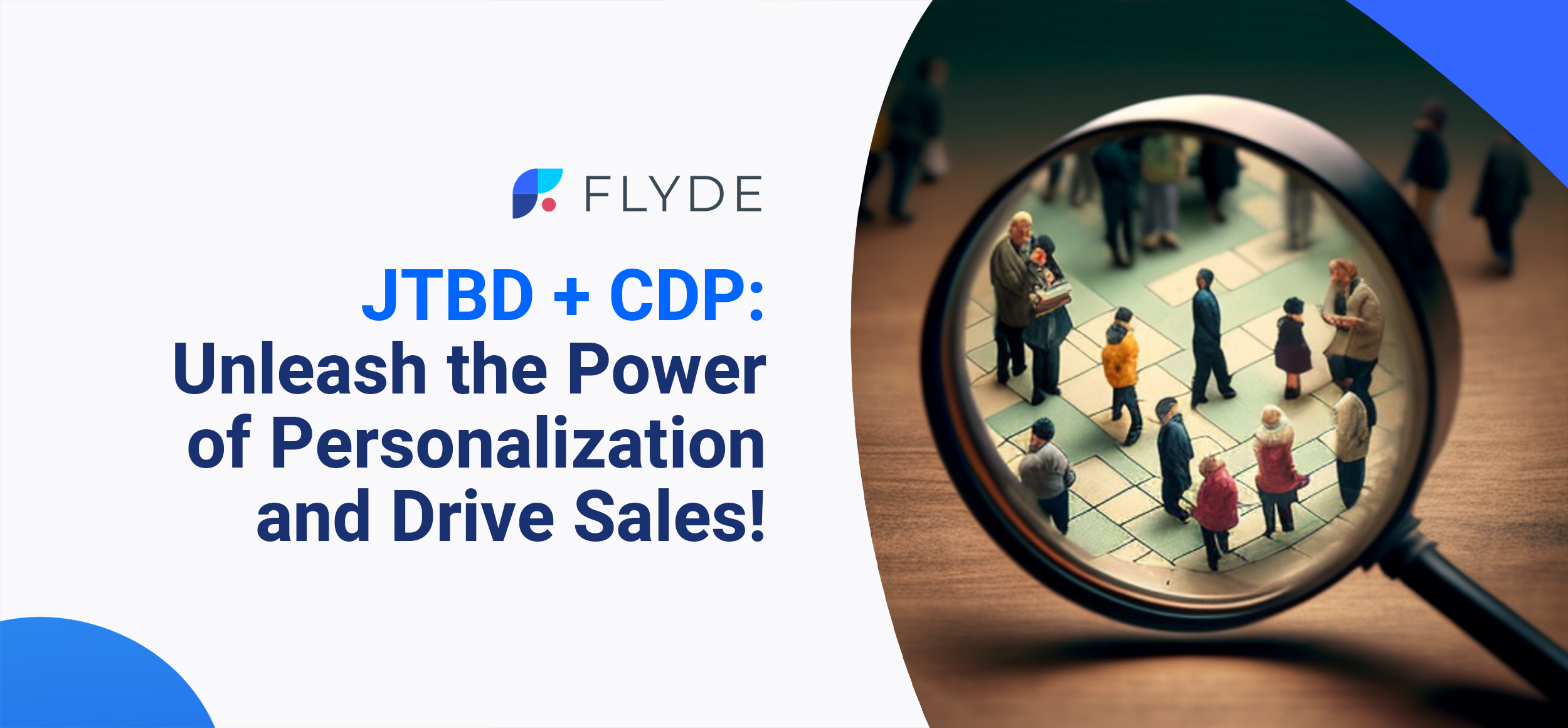
Understanding your customers’ needs and desires is essential to building a successful business. However, it’s not enough to simply ask your customers what they want. To truly understand their needs, you must identify the jobs or tasks they are trying to accomplish. This is where the Jobs-To-Be-Done (JTBD) framework comes in.
In this blog, we’ll see how to improve your JTBD strategy with a Customer Data Platform (CDP). By using a CDP, you can gain a more comprehensive understanding of your customers and their behaviors, which can help you improve your JTBD strategy.
Why Understanding JTBD Is Crucial for Your Business
Jobs-To-Be-Done (JTBD) is a framework that helps businesses understand the needs and desires of their customers by focusing on the jobs or tasks that customers are trying to accomplish. By understanding your customers’ JTBD, you can design products and services that meet their needs and differentiate yourself from competitors.
How to Improve Your JTBD Strategy with a CDP
A Customer Data Platform (CDP) is a data management tool that allows you to collect, unify, and analyze customer data from multiple sources. By using a CDP, you can gain a more comprehensive understanding of your customers and their behaviors, which can help you improve your JTBD strategy.
Here are four ways to improve your JTBD strategy with a CDP:
-
-
-
- Collect and unify customer data from multiple sources: A CDP allows you to collect and unify customer data from multiple sources, giving you a more comprehensive view of your customers.
- Analyze customer data using the JTBD framework: Using the JTBD framework, you can analyze customer data to identify the specific jobs your customers are trying to accomplish.
- Personalize marketing and product recommendations: By using the CDP to personalize your marketing and product recommendations, you can better meet your customers’ JTBD and increase engagement and sales.
- Optimize inventory to better meet customer needs: By understanding your customers’ JTBD, you can optimize your inventory to better meet their needs, reducing waste and improving your bottom line.
-
-
Case Study – How could a retailer improve their JTBD strategy with a CDP?
A retailer uses a CDP to collect and unify customer data from multiple sources, enabling them to gain a comprehensive view of their customers and their behaviors. Using the JTBD framework, the retailer analyzes the data to identify the specific jobs their customers are trying to accomplish when they shop for clothes, such as looking for stylish and fashionable clothes, prioritizing comfort and functionality, or finding clothes for specific occasions.
The retailer uses the CDP to personalize their marketing and product recommendations to better meet their customers’ JTBD. By creating targeted email campaigns and personalized product recommendations, the retailer increases customer engagement and sales, leading to higher customer loyalty and repeat purchases.
Additionally, the retailer is able to optimize their inventory to better meet their customers’ needs, reducing waste and improving their bottom line. In this way, using JTBD and a CDP can help fashion retailers to better understand their customers and improve their business results in a highly competitive industry.
Conclusion and Next Steps
In conclusion, understanding your customers’ JTBD is essential to designing products and services that meet their needs. By using a CDP to collect, unify, and analyze customer data, you can gain a deeper understanding of your customers and improve your JTBD strategy. To get started, consider implementing a CDP and using the four strategies outlined in section two to improve your JTBD strategy. With a more customer-centric approach, you can differentiate yourself from competitors and build stronger, more loyal customer relationships.
WHY FLYDE?
Do you want your company to move on to the next level? A CDP is the key tool that will allow you to maximize the potential of your data and grow your business. Working like the big multinationals in the market, which already have this type of software, and having control over all your data is now very simple.
Moreover, if you do not have IT or Data Scientist teams, this tool will allow you to outsource this function. And if you have them but want to reduce their workload and give more autonomy to your marketing and business teams when it comes to working with data, implementing an easy-to-use CDP would be the best option for your company. It will allow any single member of your company to use it, as this softwares are prepared for them.
Start taking control of your data today.
Schedule a meeting with one of our experts and discover how FLYDE can help your company achieve its goals.


If you’re looking for a way to better understand your customers and their purchasing behavior, RFM analysis is an excellent place to start. This powerful tool allows you to segment your customer base based on recency, frequency, and monetary value, giving you valuable insights into the behavior of different groups of customers.
What is RFM Analysis?
RFM analysis is a data-driven approach to customer segmentation. By analyzing customer data in terms of Recency (how recently they made a purchase), Frequency (how often they make purchases), and Monetary value (how much they spend), you can gain insights into the behavior of different groups of customers.
How Does RFM Analysis Work?
To perform RFM analysis, you need to collect data on your customers’ purchase history, including the date of their last purchase, the number of purchases they’ve made, and the total amount they’ve spent. You can then rank customers on each of these metrics and assign them a score between 1 and 5 for each metric.
For example, a customer who made a purchase in the last week would be assigned a high score for recency, while a customer who hasn’t made a purchase in several months would be assigned a low score. Similarly, a customer who has made many purchases and spent a lot of money would be assigned a high score for frequency and monetary value, while a customer who has made only a few purchases and spent little money would be assigned a low score.
Once you’ve assigned scores to each customer, you can use these scores to segment your customers into different groups based on their behavior. For example, you might have a group of high-value customers who make frequent purchases, a group of low-value customers who make infrequent purchases, and a group of recent customers who haven’t yet made a lot of purchases.
How Can You Use RFM Analysis to Improve Your Business?
Once you’ve segmented your customers using RFM analysis, you can use this information to tailor your marketing and sales strategies to each group.
For example, you might create different types of content or promotions to target each group.
If you have a group of high-value customers who make frequent purchases, you might focus on providing them with personalized offers and promotions. You might also consider creating a loyalty program to reward them for their continued business.
If you have a group of recent customers who haven’t yet made a lot of purchases, you might focus on providing them with educational content that helps them understand the value of your products or services. You might also consider offering them a special promotion to incentivize them to make a purchase.
By using RFM analysis to segment your customers and tailor your marketing and sales strategies to each group, you can improve your overall customer retention and satisfaction, which can ultimately lead to increased revenue and growth for your business.
Which martech tool would be needed to carry out RFM analysis properly?
By using a Customer Data Platform (CDP) you could effectively perform RFM analysis. A CDP is a software tool that allows you to collect, analyze, and segment customer data from multiple sources, including your website, social media channels, customer support interactions, or any other that you might have.
To perform RFM analysis using a CDP, you first need to integrate your customer data into the platform by connecting your website analytics tool, email marketing platform, CRM system, and any other database with customer information that you have available to the CDP. Once integrated, the CDP will automatically assign scores to each customer based on their behavior in terms of Recency, Frequency, and Monetary value.
Using the insights gained from RFM analysis, you can segment your customers into different groups and tailor your marketing and sales strategies to each group. By using a CDP to perform RFM analysis, you can gain a more comprehensive understanding of your customers’ behavior, make informed business decisions, and improve your overall performance.
WHY FLYDE?
Do you want your company to move on to the next level? A CDP is the key tool that will allow you to maximize the potential of your data and grow your business. Working like the big multinationals in the market, which already have this type of software, and having control over all your data is now very simple.
Moreover, if you do not have IT or Data Scientist teams, this tool will allow you to outsource this function. And if you have them but want to reduce their workload and give more autonomy to your marketing and business teams when it comes to working with data, implementing an easy-to-use CDP would be the best option for your company. It will allow any single member of your company to use it, as this softwares are prepared for them.
Start taking control of your data today.
Schedule a meeting with one of our experts and discover how FLYDE can help your company achieve its goals.

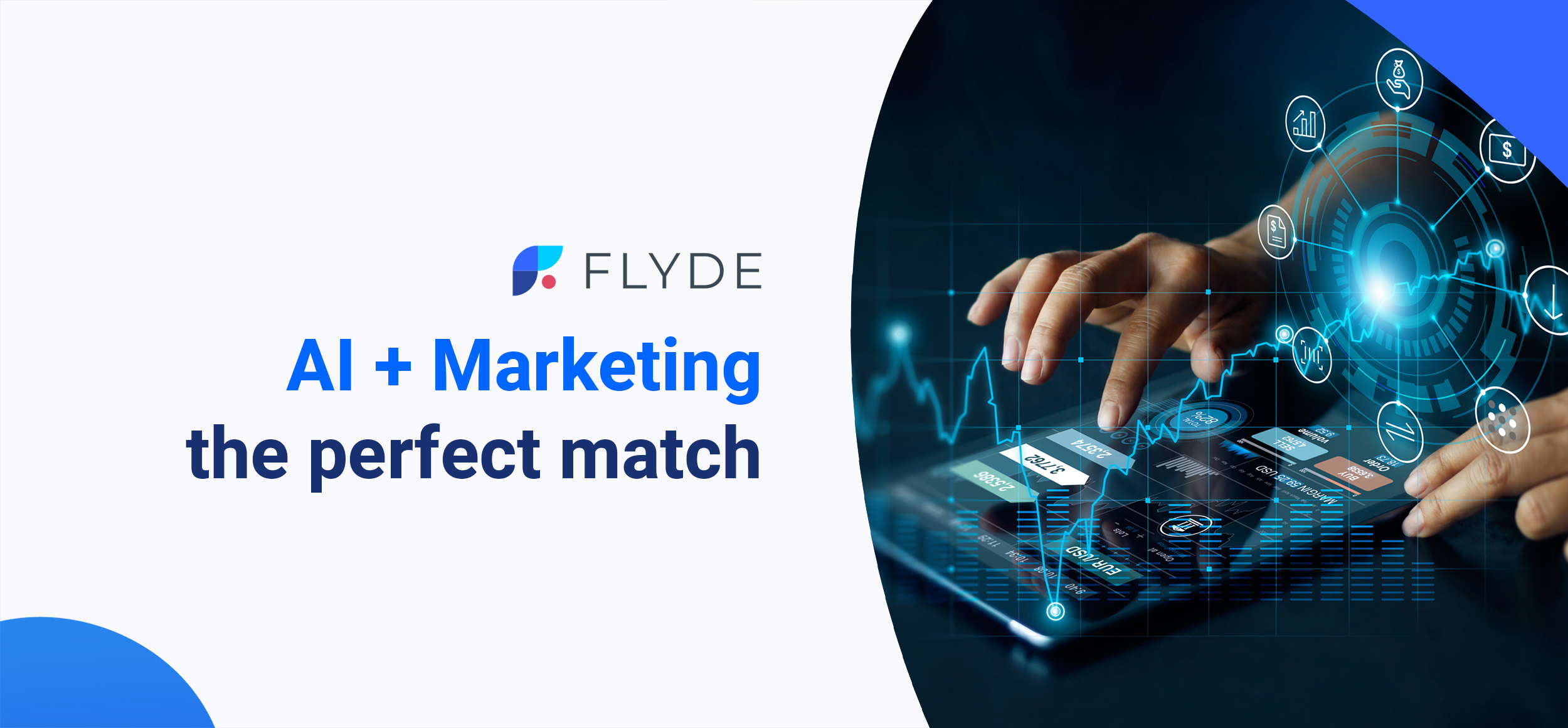
Artificial Intelligence, or AI, is the simulation of human intelligence in machines that are programmed to think and learn like humans. It is a branch of computer science that deals with creating intelligent machines that can think, learn, and adapt like humans.
AI is used in a variety of applications such as image recognition, natural language processing, decision making, and many other fields.
Types of AI that can be useful for marketing teams
Artificial intelligence (AI) is increasingly being used in marketing to help businesses better understand their customers and target their marketing efforts more effectively. Some specific ways that AI is being applied in marketing include:
- Personalization: AI can be used to analyze customer data and create personalized marketing campaigns that are tailored to the individual.
- Chatbots: AI-powered chatbots can be used to engage with customers in real-time, providing them with information and answering their questions.
- Predictive analytics: AI can be used to analyze customer data and make predictions about future buying behavior, which can help businesses make more informed decisions about their marketing strategies.
- Image and video recognition: AI-powered image and video recognition technologies can be used to analyze visual content and extract insights, which can be used to inform marketing strategies.
Data-Driven Marketing
Data-driven marketing is a strategy that uses data and analytics to inform marketing decisions. It involves collecting, analyzing, and interpreting data about customer behavior, demographics, and other factors to gain insights that can be used to improve marketing campaigns and drive business growth.
The goal of data-driven marketing is to use data to understand customer needs and preferences and to develop effective marketing campaigns that will reach and engage the right audience. This approach allows businesses to make data-driven decisions, such as which products to promote, which channels to use, and how to allocate budget.
Customer Data Platform to unify Marketing and Artificial Intelligence
A Customer Data Platform (CDP) is a system that allows businesses to collect, integrate, and manage customer data from a variety of sources in order to gain a single, unified view of the customer. CDPs are used to support data-driven marketing by providing a centralized location for storing and managing customer data, which can then be used to inform marketing decisions. A CDP for it to be useful, needs of Artificial Intelligence models to be run in order to process this huge amounts of data correctly, and to drive predictive models.
Here are a few ways that a CDP can be used for marketing:
-
- Customer segmentation: CDPs can be used to segment customers based on their behavior, demographics, and other factors, which can be used to create targeted marketing campaigns.
- Personalization: CDPs can be used to create personalized marketing campaigns that are tailored to the individual. This can be done by analyzing customer data and identifying patterns that can be used to create targeted messaging and offers.
- Campaign optimization: CDPs can be used to analyze the effectiveness of marketing campaigns and make adjustments as necessary. This can be done by tracking the performance of campaigns and identifying areas where they can be improved.
- Data Governance: CDPs help to ensure data governance by providing a central location for storing and managing customer data, and also help to ensure that data is accurate and up-to-date
- Cross-channel marketing: CDPs can be used to coordinate marketing efforts across multiple channels, such as email, social media, and web.
- Attribution: CDPs can be used to identify which marketing channels are most effective in driving conversions and revenue, which can inform future marketing investments.
- Predictive modeling: CDPs can be used to analyze data on customer behavior and make predictions about future buying behavior, which can inform marketing decisions.
WHY FLYDE?
Do you want your company to move on to the next level? A CDP is the key tool that will allow you to maximize the potential of your data and grow your business. Working like the big multinationals in the market, which already have this type of software, and having control over all your data is now very simple.
Moreover, if you do not have IT or Data Scientist teams, this tool will allow you to outsource this function. And if you have them but want to reduce their workload and give more autonomy to your marketing and business teams when it comes to working with data, implementing an easy-to-use CDP would be the best option for your company. It will allow any single member of your company to use it, as this softwares are prepared for them.
Start taking control of your data today.
Schedule a meeting with one of our experts and discover how FLYDE can help your company achieve its goals.


Christmas can be the toughest or happiest time of the year for marketeers. The time when sales boost or not showing your marketing’s strengths or weaknesess.
In this blog we are not going to tell you how to become a millionaire nor are we going to explain how to easily become a Christmas hero, our sole purpose is to explain how using data you can drive a proper Christmas marketing strategy.
Data-driven marketing
Base your strategy on data and not intuition. Make sure your KPIs are SMART, can be mapped correctly with the tools you have, and make sure you are not missing key customer data.
At Christmas in particular knowing your customers would be fundamental to drive one-to-one marketing strategies, basic data is fine, but if you have a lot more available use it:
You can track your customer across all your online channels. This will help you to map their Customer Journey. If you already have a tagging tool such as FLYDE’s, then you may be interested to know that you can unify this data with offline data (from physical shops or offline marketing campaigns), and in turn with socio-demographic data, thus obtaining a 360-degree view of your customer.
First-Party Data Strategy
This data is known as first-party data, and you should start using it, firstly, because of the loss of third-party cookies, and secondly, because of the amount of data and possibilities you are missing out on.
Of those data sources we discussed, the spectrum is even greater. Not only is it essential to collect data from all sources, but going one step further in the data you collect can make a fundamental change to your strategy.
By collecting attitudinal and behavioural data, such as the number of times a customer looks at a product before buying it, or their interest in the themes of your offline and online campaigns, or whether they buy for themselves or as a gift (depending on the variability of sizes they are looking for). You will be able to enrich this customer database in order to generate campaigns and strategies that are not based on intuition but on data, thus avoiding failures or recriminations to the marketing team.
Platform to obtain Actionable Insights from first-party data
All this data must come together to bring value to your company, without this unification the data lacks the real value it can achieve. To do this, there is a type of platform that surpasses CRM because it not only allows you to store basic data but also allows you to store large volumes of data or Big Data, and to act on them within the platform itself with Artificial Intelligence processes. This Platform is a Customer Data Platform.
All this will allow your company to have all this structured data, to segment, personalise and predict with countless variables. As we have previously explained, 360º customer profiles open up these new possibilities.
Customer data platform for Christmas
And back to the initial question, how can I save my Christmas campaign with this CDP stuff? You can’t, a CDP doesn’t do magic, nor does Big Data or Artificial Intelligence despite what it seems lately with the boom of this technology.
A CDP or Customer Data Platform is not going to do marketing for you, what it will do is become the fundamental support for your company. Because as we have been seeing for a few years now, the customer must be at the centre of every company, and without a CDP this is not really possible.
So a marketing team that has all the data at its fingertips will be a marketing team that will no longer ask itself why this campaign didn’t work and the previous one did? With data you will get certainty.
You will be able to make predictions about the type of campaign that will work at any given time of the year based on how each campaign has affected your customers. So if I want to launch a campaign at Christmas, I will be able to compare by type of campaign and by date, with those previously carried out, to see the expected performance based on the data; a calculation that increases exponentially its accuracy and simplicity if you have a predictive model like the ones FLYDE has available.
Later, once you have launched the campaign in your CDP, you will be able to track your KPIs and compare them to see where the success or failure has been, where there has been a change with respect to the previous one, what to improve and what to maintain. As we have said throughout the article, a CDP is not going to do marketing for you, but it can help you stop making mistakes and start relying on data.
WHY FLYDE?
Do you want your company to move on to the next level? A CDP is the key tool that will allow you to maximize the potential of your data and grow your business. Working like the big multinationals in the market, which already have this type of software, and having control over all your data is now very simple.
Moreover, if you do not have IT or Data Scientist teams, this tool will allow you to outsource this function. And if you have them but want to reduce their workload and give more autonomy to your marketing and business teams when it comes to working with data, implementing an easy-to-use CDP would be the best option for your company. It will allow any single member of your company to use it, as this softwares are prepared for them.
Start taking control of your data today.
Schedule a meeting with one of our experts and discover how FLYDE can help your company achieve its goals.

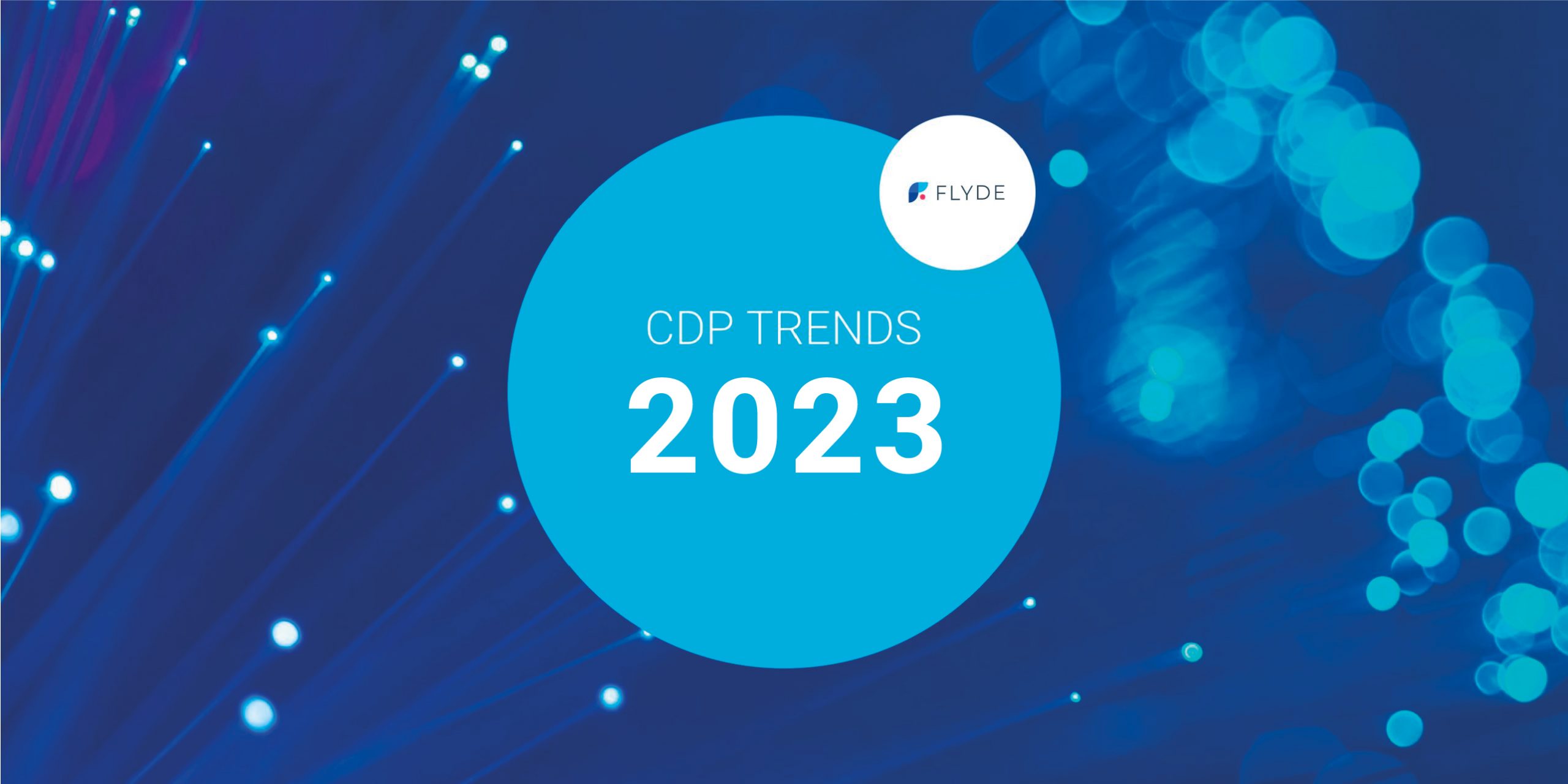
2022 has been a key year for Customer Data Platforms. According to data provided by Deloitte, high growth brands are leading this change, with 61% moving to a first-party data strategy, while just 41% of low-growth brands are doing so.
The prohibition of third-party cookies and the obligation to use own data or customers who demand increasingly personalized experiences are some of the reasons that have driven this growth, which is expected to continue in 2023.
But what else can we expect? Here are 4 trends that will shape CDPs in 2023:
1. Increased adoption of CDPs by companies
Omnichannel strategies
The arrival of COVID-19, the new ways of buying (ROPO, Showrooming), or the constant raise of online buying, are some of the causes of the increased need of companies to develop omnichannel strategies, in order to unify their channels and their customer data through the whole brand.
Customers demand a better customer experience
Communication and generalized customer treatment is a thing of the past. Customer experience has positioned itself as a key factor for customers to stay with a brand or abandon it to the point where 86% of consumers would be willing to pay more if it meant a better and more personalized customer experience.
Obtaining relevant insights from Customer Data
Personalization and digital transformation also means receiving much larger amounts of data from our customers. Therefore, it becomes necessary to have a system that stores, organizes and processes data properly.
2. The Customer Data Platform (CDP) concept takes hold and is divided into subcategories.
While it is true that there are markets such as the U.S. where this type of platform is already well established, there are others where CDPs are just beginning to gain momentum.
At the moment, according to the CDP Institute’s Member Survey 2022, more than 60% of clients understand that the main functionalities of this type of platform are unified views of clients and the loading of data from different sources.
The year 2023 is expected to serve as a turning point and leave behind doubts about what these platforms are, what they do and how they can help a company. In the same way, it is estimated that a greater expansion of the knowledge of these platforms and their benefits will help the implementation in companies to understand how they can fit them into their MarTech strategies.
It is also expected that vendors will begin to differentiate into subcategories (pure data, analytics and campaigns) to help customers quickly identify capabilities and benefits.
3. Increased concern for data privacy
41% of consumers globally say their trust in digital service providers’ ability to keep personal data secure has decreased. By storing data in a Platform regulated under the strict GDPR protection will ensure a much safer environment for Customer’s Data.
We know how important it is to protect your customers’ data. That’s why at FLYDE we comply with legal and data protection obligations. You can find out how here.
4. Easy to use CDP platforms
The complexity of analyzing large amounts of data from different sources and processing them has made most of the CDP platforms on the market very technical. While it is true that there are companies with large IT teams, we can also find others in which the burden of these actions falls on teams with little technical knowledge that make it very difficult to use these tools properly.
Some suppliers are opting to facilitate some of the tools that make up their platforms, although there is still a long way to go as these changes require time and investment. However, it is still important: CDP platforms are becoming more and more transversal to all company departments. Sharing unified profiles, sharing data, cross-referencing and processing them in real time or generating strategies from them are just some of the common processes that we can find in any company on a daily basis.
For this reason, marketing and sales professionals, among other departments, are looking for greater autonomy when generating campaigns, cross-referencing data, etc., and thus avoiding funnels and waiting times.
WHY FLYDE?
Do you want your company to move on to the next level? A CDP is the key tool that will allow you to maximize the potential of your data and grow your business. Working like the big multinationals in the market, which already have this type of software, and having control over all your data is now very simple.
Moreover, if you do not have IT or Data Scientist teams, this tool will allow you to outsource this function. And if you have them but want to reduce their workload and give more autonomy to your marketing and business teams when it comes to working with data, implementing an easy-to-use CDP would be the best option for your company. It will allow any single member of your company to use it, as this softwares are prepared for them.
Start taking control of your data today.
Schedule a meeting with one of our experts and discover how FLYDE can help your company achieve its goals.

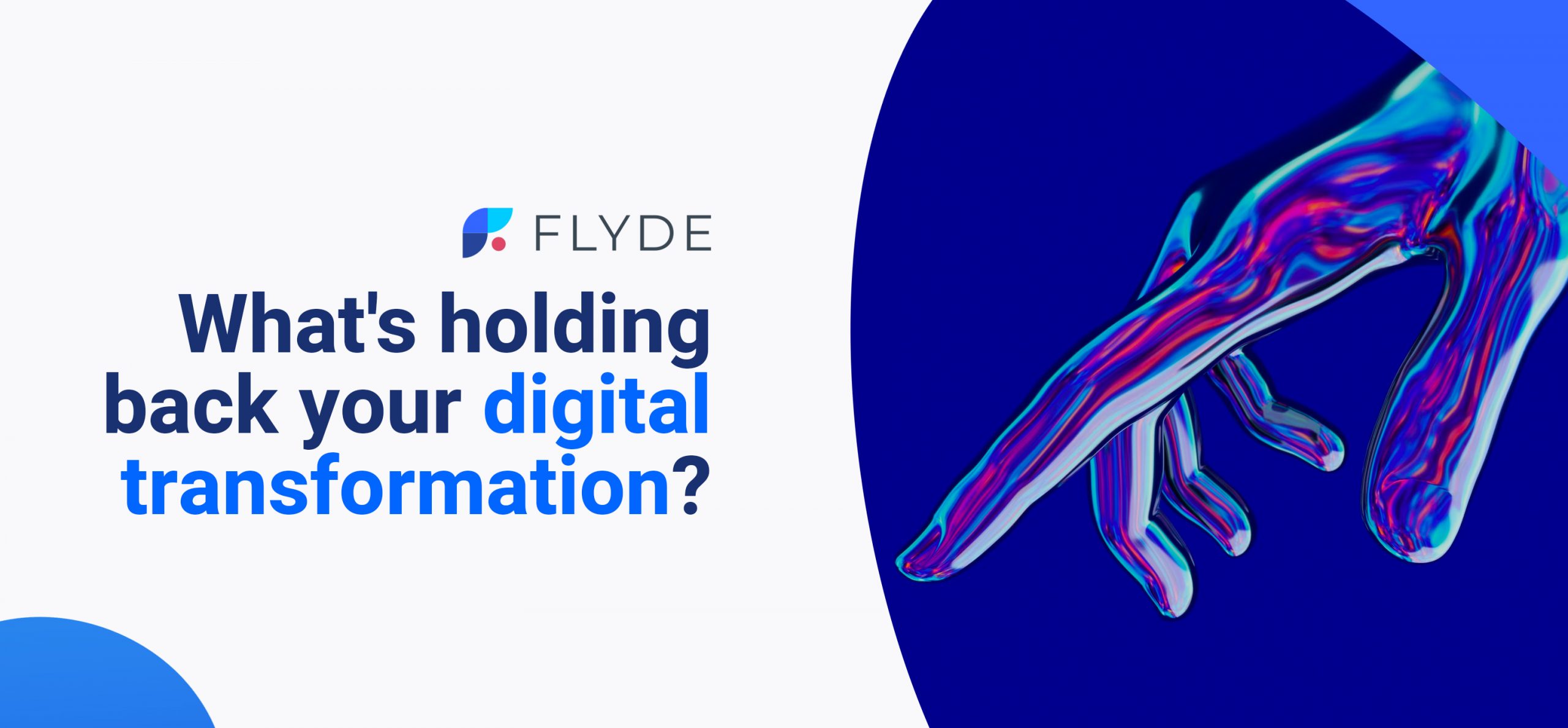
Digital transformation has been a problem for companies for several decades now, it has changed according to the evolution and technological adaptation of companies, but it is yet a latent issue. Today, the digital transformation of companies mainly involves the use of large amounts of data, and especially the ability to store them and make them actionable.
In this sense there are some problems that companies tend to encounter, this 3 main issues will be analyzed in this blog, seeking for possible solutions.
Keeping data organized
Being able to store data and structure it may not seem so difficult if we just take into account basic data, as companies used to do 20 years ago. The problem of today’s possibilities is that companies face huge amounts of data from thousands of sources, and not just basic data, but also attitudinal or behavioral data.
These possibilities make data structuration quite tough, most companies use different platforms where they store different pieces of data, which makes even more complex the unification of criteria. A platform where companies could store all of their data in order to make it actionable, taking into account all of it, and saving large amounts of time to employees, makes things easier and manageable. A Customer Data Platform enables companies to store every single piece of Data related to customers, sales, or campaigns.
Obtaining Actionable Insights
Once this data is obtained and unified in one place companies need to obtain information from it. Making this data actionable is also much harder than what it may seem, as today’s technology enables companies to obtain much further actionable insights than ever before.
The application of Artificial Inteligence on this large amounts of data (Big Data), is a must if your company wants to achieve the furthest insights possible, as AI allows a data processing capability that humans are unable to reach. This will help with obtaining insights and also with predicting tendencies with a really high level of precision.
Not being able to manage the tools correctly
The above mentioned technologies and possibilities may seem far away from your company’s possibilities as it seems complex. Most platforms or systems that allow companies to develop this technology tend to be difficult to use due to its technical complexity. This is a huge problem as if companies hire technology that can’t use properly or to the lastest extend, then it would be useless.
Hiring easy to use technology and being able to understand it with webinars or direct contact with the developers would help companies enormously to exploit data as ever before. Making Digital Transformation a reality and not a further possibility.
WHY FLYDE?
Do you want your company to move on to the next level? A CDP is the key tool that will allow you to maximise the potential of your data and grow your business. Working like the big multinationals in the market, which already have this type of software, and having control over all your data is now very simple.
Moreover, if you do not have IT or Data Scientist teams, this tool will allow you to outsource this function. And if you have them but want to reduce their workload and give more autonomy to your marketing and business teams when it comes to working with data, implementing an easy-to-use CDP would be the best option for your company. It will allow any single member of your company to use it, as this softwares are prepared for them.
Start taking control of your data today.
Schedule a meeting with one of our experts and discover how FLYDE can help your company achieve its goals.

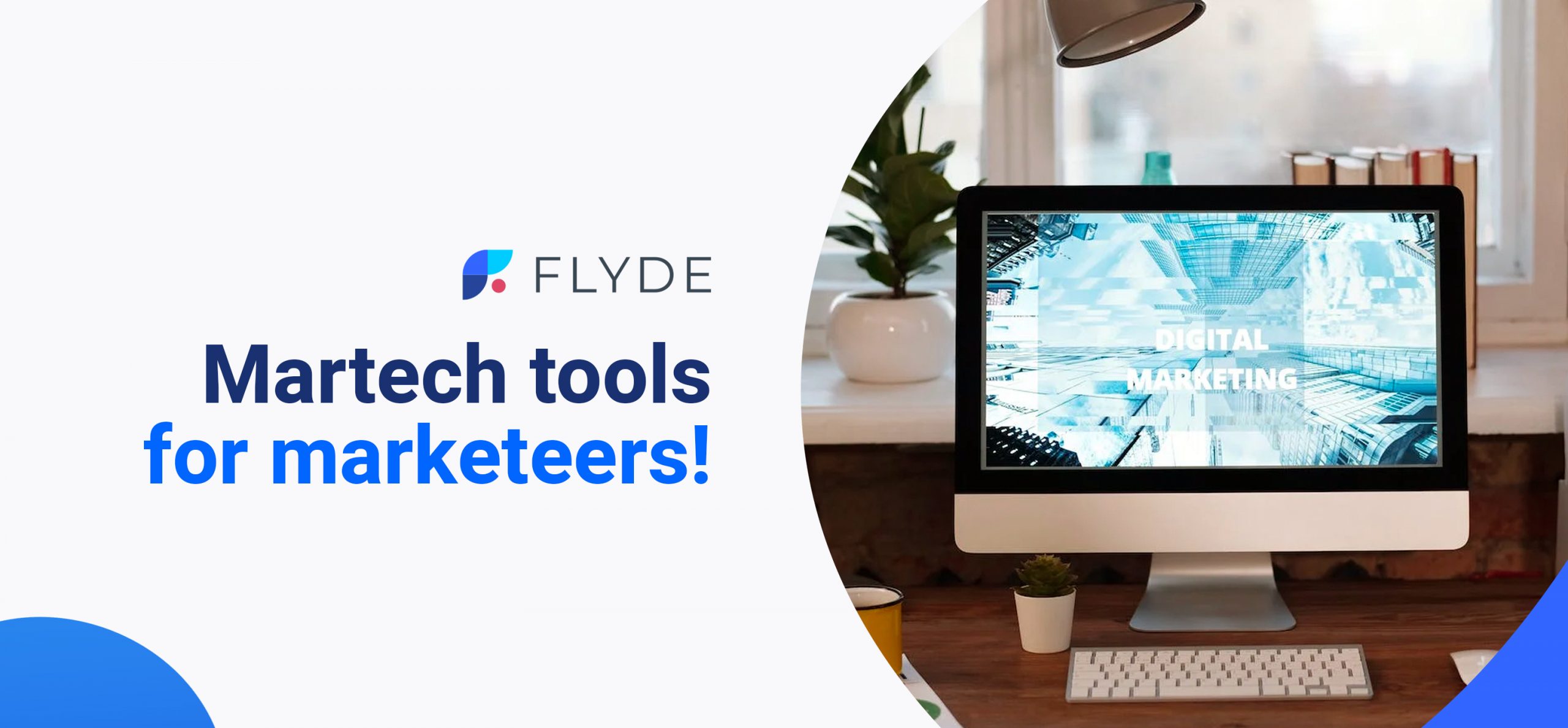
The technological development of Marketing tools in the last decade has been huge, but marketing teams are yet unable to work on many of them, that is why there has always appeared an easy-to-use solution for every new Martech tool launched in the market.
Have new technologies changed the way in which marketing is done?
Definitely not, it just changed the channel and the possibilities, but the strategies maintain quite similar in its basis to the ones done 50 years ago.
The other day we compared the use of Cookies today, with observing people in the store (for a shopper 50 year ago), their movements and their preferences, in order to offer them something that matches their expectations next time. Same strategy with a huge difference in technology.
By this we mean that the technological development specially in Marketing areas has supposed a change in the capacity to process data. Now, we are able to personalize as a shopper did 50 years ago, but towards thousands of customers instead of 30 or 40.
More Martech tools than ever
A marketeer in 2022 is supposed to know about how to carry on marketing strategies, and at the same time know how to use: A Customer Relation Management platforms, an email marketing platform, Google Analytics, Google Ads., Facebook Ads., a Data Management Platform, and many more depending on the company.
This is driving marketeers crazy as every year a new tool appears, but without substituting another one. So every tool sums up to the ones previously used, making this teams waste time, or even worst have an IT Team to work on the platform. This also tends to happen with complex to use platforms, that need programmatic level users.
One CDP to unify them all.
The tendency in the last years has been to drive marketing teams into customer-centric teams, due to the importance of customers for companies. This is why Customer Data Platforms are becoming increasingly essential for Marketing Teams.
Customer Data Platforms (CDP) enable companies to unify all of their information from the sources available, plus the data obtained from the various platforms mentioned before, in order to allow marketing teams to work through one platform. This solves many problems of time and technical abilities required as the team would mainly access to this CDP to work on Customer knowledge.
Easy-to-use Customer Data Platform
A huge problem of Customer Data Platforms has been the difficulty to use inherent to this softwares. Due to the short living period of it, and the complexity upon the technology involved (Big Data and Artificial Intelligence), CDPs have been really complicated to manage and usually managed by IT or Data Science teams.
Marketing teams used to be involved only in the last part of the process, in making the data actionable. Although this seems a problem as each team needs to take control over their data. This is why FLYDE appeared in the market, to allow marketing teams to take control over their data, and to make this technology accessible to every single company.
WHY FLYDE?
Do you want your company to move on to the next level? A CDP is the key tool that will allow you to maximise the potential of your data and grow your business. Working like the big multinationals in the market, which already have this type of software, and having control over all your data is now very simple.
Moreover, if you do not have IT or Data Scientist teams, this tool will allow you to outsource this function. And if you have them but want to reduce their workload and give more autonomy to your marketing and business teams when it comes to working with data, implementing an easy-to-use CDP would be the best option for your company. It will allow any single member of your company to use it, as this softwares are prepared for them.
Start taking control of your data today.
Schedule a meeting with one of our experts and discover how FLYDE can help your company achieve its goals.


There are new technological solutions constantly appearing for companies to take control over customer experience. But which one should I choose? Is there really a difference between this platforms?
In this blog we would analyze the differences between Customer Relationship Management (CRM) platforms, Data Management Platforms (DMP), and Customer Data Platforms (CDP). We would also the reasons behind the latest boom of CDPs in the US, with estimations rising up to a $15.3 billion market for 2026.
What is a CRM?
A Customer Relations Management platform, is a platform where you can store Basic Data from you leads. It is a must for any sales team, as it helps to store and structure information of your customers.
What is a DMP?
A Data Management Platform, is used to unify data in order to create and segment audiences, in really specific ways as the information integrated comes from different data sources.
What is a CDP?
A Customer Data Platform is a software that enables companies to unify every single piece of data obtained from customers (Including the data you have in your CRM), and unifies it with 3rd Party Data (or data obtained from the market in which you operate), to portray a 360 profile of your customers, in order to segment, personalize, and predict with the use of ML/AI.
Technological Evolution: From a CRM to a CDP
CRM (1990s)
CRMs emerged at the end of the last century as a way of storing basic customer information online. They were a very important step, sales teams were able to use them to have databases with leads and to carry out campaigns through them.
Today they are still a great help for lead management and lead storage, a great support for sales teams, but they do not cover all the needs of the contemporary company.
Nowadays, companies need to have a database that covers all possible customer data, not only basic information (age, sex, forms of contact, etc.), but they also need to enrich this information with behavioral and attitudinal data (product preferences, forms of purchase, contact times, favorite types of promotions, etc.).
DMP (2000s)
This is how the DMP (Data Management Platform) was born, with the intention of gathering all the information about your customers in a single platform, not only the sales data, but you could unify this data (extracted from a CRM), with behaviors and attitudes of your customers.
So with a DMP your company can create audiences and segment them in hundreds of ways so that your advertising or marketing teams can target their campaigns to much more specific audiences.
The DMP was the next step to CRM as it was much closer to the online personalization that companies were looking for.
CDP (2020s)
The unification of all possible customer data opened up a world of possibilities, but the key piece of the puzzle was missing, converting this data into actionable data. CDP was born to integrate all the aforementioned data with ML, allowing companies to know their customers like never before. It allows you to have a detailed picture of each customer as an individual so that you can personalize your campaigns to the extreme.
The 360-degree customer profile that you will obtain using a CDP allows companies to segment, personalize and predict behaviors with the use of Machine Learning. Customer Data Platforms thus emerge as the ultimate solution for omni-channel customer management, multiplying the knowledge you have of your customer to levels never before imagined.
WHY FLYDE?
Do you want your company to move on to the next level? A CDP is the key tool that will allow you to maximise the potential of your data and grow your business. Working like the big multinationals in the market, which already have this type of software, and having control over all your data is now very simple.
Moreover, if you do not have IT or Data Scientist teams, this tool will allow you to outsource this function. And if you have them but want to reduce their workload and give more autonomy to your marketing and business teams when it comes to working with data, implementing an easy-to-use CDP would be the best option for your company. It will allow any single member of your company to use it, as this softwares are prepared for them.
Start taking control of your data today.
Schedule a meeting with one of our experts and discover how FLYDE can help your company achieve its goals.

